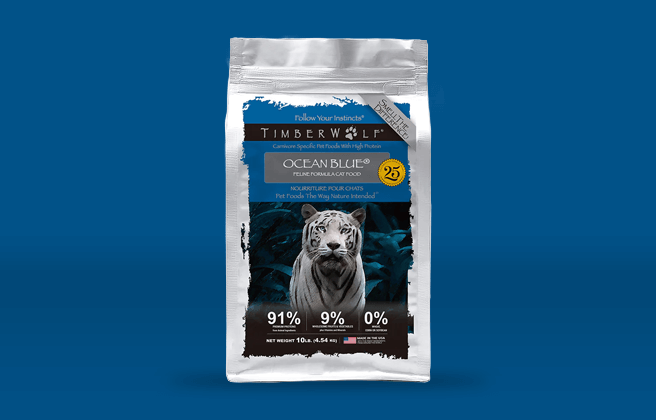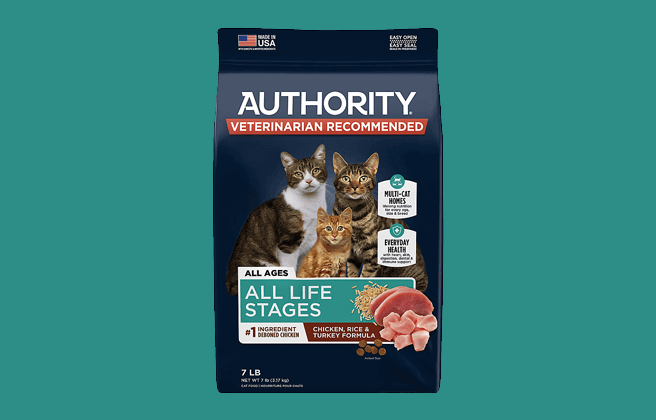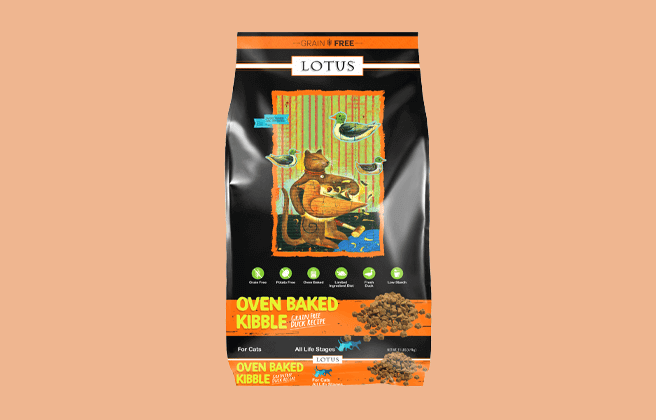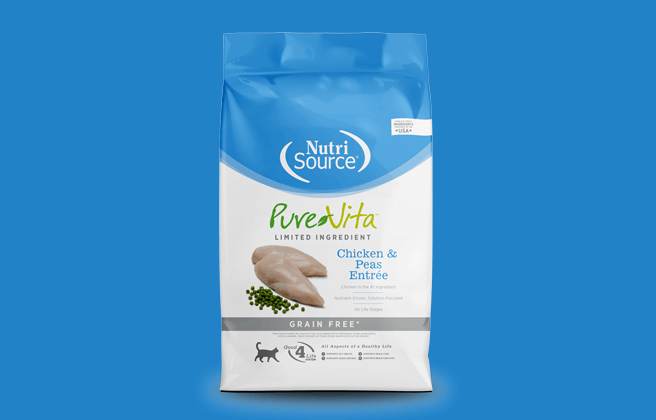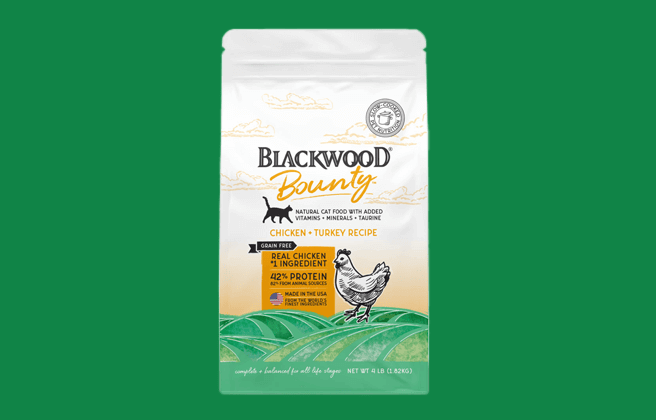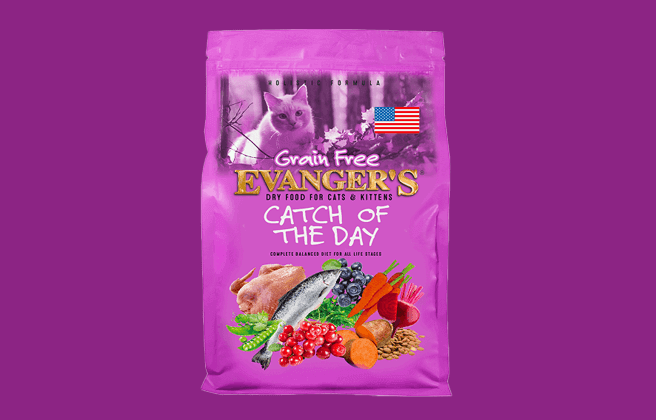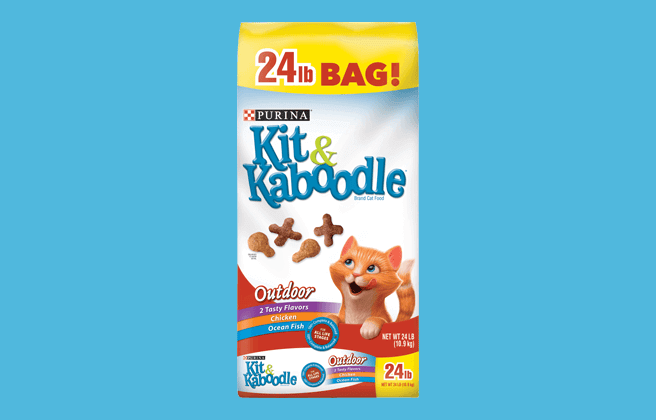
Our Verdict
Kit & Kaboodle dry product range is made of three recipes which all receive the Cat Food Advisor rating, 1.5 stars.
This range of food does not contain quality animal meat but instead is made up of a combination of corn and meal, along with animal by-products.
Pros
- Contains vitamins and minerals
Cons
- Contains corn
- Low in protein
- High in carbohydrate
- Limited range
- Artificial colors & preservatives
The table below shows each recipe in the range including our rating and the AAFCO nutrient profile: Growth (kitten), Maintenance (adult), All Life Stages, Supplemental or Unspecified.
| Product line | Rating | AAFCO |
|---|---|---|
| Kit & Kaboodle Outdoor Dry Cat Food | 1.5 | A |
| Kit & Kaboodle Indoor Dry Cat Food | 1.5 | M |
| Kit & Kaboodle Original Dry Cat Food | 1.5 | M |
Recipe and Label Analysis
Kit & Kaboodle Outdoor Dry Cat Food was selected to represent the other products in the line for a detailed recipe and nutrient analysis.
Label and nutrient data below are calculated using dry matter basis.
Kit & Kaboodle Outdoor Dry Cat Food
Estimated Dry Matter Nutrient Content
Protein
Fat
CarbsCarbohydrates
Ground yellow corn, corn gluten meal, soybean meal, chicken by-product meal, meat by- product meal, animal fat preserved with BHA & BHT, animal liver flavor, phosphoric acid, salt, calcium carbonate, fish meal, choline chloride, [vitamin A supplement, vitamin D-3 supplement, niacin (vitamin B-3), vitamin E supplement, calcium pantothenate (vitamin B-5), thiamine mononitrate (vitamin B-1), riboflavin supplement (vitamin B-2), pyridoxine hydrochloride (vitamin B-6), folic acid (vitamin B-9), menadione sodium bisulfite complex (vitamin K), biotin (vitamin B-7), vitamin B-12 supplement], [zinc sulfate, ferrous sulfate, copper sulfate, manganese sulfate, calcium iodate, sodium selenite], taurine, potassium chloride, l-tryptophan, dl-methionine, red 40, yellow 5, blue 2.
Fiber (estimated dry matter content) = 3%
Red denotes any controversial items
Ingredients Analysis
The first ingredient is ground yellow corn, a coarsely ground flour made from dried corn. Corn is an inexpensive and controversial cereal grain of only modest nutritional value to a cat.
For this reason, we do not consider corn a preferred component in any cat food.
The second ingredient is corn gluten meal. Gluten is the rubbery residue remaining once corn has had most of its starchy carbohydrate washed out of it.
Although corn gluten meal contains 60% protein, this ingredient would be expected to have a lower biological value than meat.
The third ingredient is soybean meal, a by-product of soybean oil production more commonly found in farm animal feeds.
Although soybean meal contains 48% protein, this ingredient would be expected to have a lower biological value than meat.
Less costly plant-based products like these can notably boost the total protein reported on the label — a factor that must be considered when judging the actual meat content of this cat food.
The fourth ingredient is chicken by-product meal, a dry rendered product of slaughterhouse waste. It’s made from what’s left of a slaughtered chicken after all the choice cuts have been removed.
On the brighter side, by-product meals are meat concentrates and contain nearly 300% more protein than fresh chicken.
The quality of this ingredient can vary, depending on the caliber of the raw materials obtained by the manufacturer.
The fifth ingredient is meat by-product meal, a dry rendered product of slaughterhouse waste. It’s made from what’s left of a slaughtered mammal after all the prime cuts have been removed.
With the exception of hair, horns, teeth and hooves, this stuff can include almost anything else such as heads, ovaries, or developing fetuses. 1
What’s worse, this particular item is anonymous. Since there’s no mention of a specific animal, this ingredient could come from almost anywhere: spoiled supermarket meat, roadkill, dead, diseased or dying livestock — even euthanized farm animals.
On the brighter side, by-product meals are meat concentrates and contain nearly 300% more protein than fresh meat.
In any case, although this item contains all the amino acids a cat needs, we consider meat by-product meal an inexpensive, lower quality ingredient.
The sixth ingredient is animal fat preserved with BHA & BHT. Animal fat is a generic by-product of rendering, the same high-temperature process used to make meat meals.
Since there’s no mention of a specific animal, this item could come from just about anywhere: salvaged roadkill, spoiled supermarket meat — even dead, diseased or dying cattle.
For this reason, we do not consider generic animal fat a quality ingredient.
The seventh ingredient is animal liver flavor. Liver digest is made from the enzymatic breakdown of liver tissue. Digests are commonly used by pet food manufacturers as flavor enhancers.
Normally, a digest can be considered an acceptable ingredient. However, in this case, the digest is of lower quality — made from the organ tissue of an unnamed (generic) source species.
The eighth ingredient is phosphoric acid. Phosphoric acid is added to cat foods for a number of reasons including, being anti-microbial, control of both the food pH and manipulation of the cat’s urinary pH, and even palatability.
Acidifying cat food is a method used to control Salmonella. Manipulation of a cat’s urinary pH is a measure to promote the dissolution of urinary stones, and to create the urinary environment where stones are unable to form. The presence of phosphoric acid within this food is seen as positive.
From here the list goes on to include a number of other items. But to be realistic, ingredients located this far down the list (other than nutritional supplements) are not likely to affect the overall rating of the product.
However, this recipe contains artificial coloring. We’re always disappointed to find artificial coloring in any pet food. That’s because coloring is used to make the product more appealing to humans — not your cat. After all, do you really think your cat cares what color their food is?
Nutrient Analysis
Based on its ingredients alone, Kit & Kaboodle Outdoor Dry Cat Food recipe looks like a below-average dry product.
The dashboard displays a dry matter protein reading of 34.1%, a fat level of 13.6% and an estimated carbohydrate level of 44.3%.
As a group, the brand features an average protein content of 32.6% and a mean fat level of 11.7%. Together these figures suggest a carbohydrate content of 47.7% for the overall product line, alongside a fat to protein ratio of 36%.
This means this Kit & Kaboodle dry range contains below-average protein, above-average carbohydrate and near-average fat, when compared to typical dry cat food.
Final Word
Kit & Kaboodle dry cat food is an inexpensive brand that uses low-quality ingredients, full of fillers with little if any protein from named meat or fish and so providing little nutritional value for cats.
Has Kit & Kaboodle cat food been recalled in the past?
Yes, Purina (the owner of Kit & Kaboodle), has had a number of cat food recalls over the years.
In July 2021 cans of Purina Pro Plan Complete Essentials Tuna Entree in Sauce Wet Cat Food were recalled as they may have contained plastic.
In March 2019, Purina issued a recall of one of its Muse cat foods.
In 2012, a single lot of Purina Veterinary Diets OM Overweight Management Feline Formula was recalled due to low levels of thiamine. Production Code #11721159.
In June 2011, Friskies issued a small recall due to the potential risk of salmonella contamination. This recall only affected a small range of Friskies products, – the Friskies Grillers Blend dry cat food recipe in 3.15lb and 16 lb bags with best-by dates of August 2012.
In the same year, some other Purina dry cat foods were recalled due to suspected salmonella contamination. The products affected were: Purina ONE Vibrant Maturity 7+ dry cat food, 3.5 lb. and 7 lb. bags, with a “Best by” date of May 2012 and Production Code #03341084 or #03351084 and Purina Cat Chow Naturals, 6.3 lb., Production Code #10331083 13, with “Best by” date of August 2012.
You can view a complete list of all cat food recalls since 2021 here.
To stay on top of any cat food product recalls, sign up for our free email alerts, here.
About
Nestlé Purina PetCare is an American subsidiary of the Swiss corporation Nestlé, based in St. Louis, Missouri. It produces and markets pet food, treats, cat and dog litter.
Kit & Kaboodle are owned by Purina alongside: Beyond, Breeze, DenaLife, Fancy Feast, Friskies, Petivity, Purina Cat Chow, Purina ONE, Purina Pro Plan, Purina Pro Plan Veterinary Diets, Tidy Cats and Whisker Lickin’s.
Best cat foods
We uphold the highest editorial standards when creating the authoritative content pet parents rely on and trust.
Every piece of clinical content on the Cat Food Advisor is reviewed by our certified Veterinary Advisory Board, which consists of licensed veterinarians and medically certified specialists.
Our reviews are completely independent; we are not paid by any pet food company to promote their products favorably. We do not accept money, gifts, samples or other incentives in exchange for special consideration. For more information see our Disclaimer & Disclosure page.







